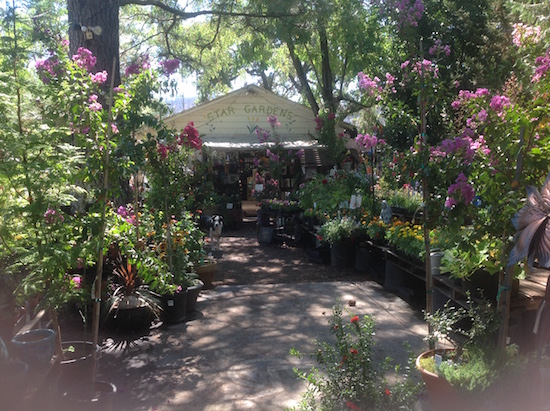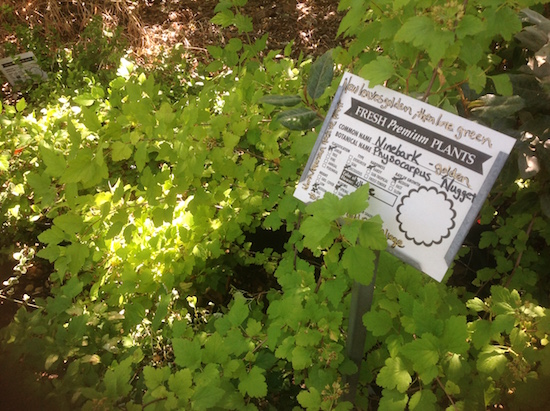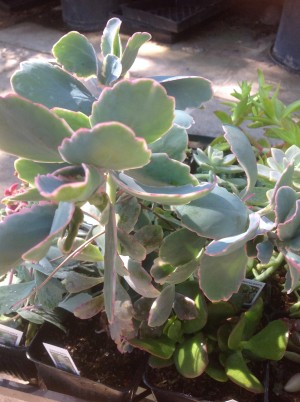Plant of the Month
Physocarpus- Ninebark
There is a western mountain native of this genus of deciduous shrubs, Physocarpus capitatus, but this will focus on Common Ninebark, P. opulifolius because the hybrids are very worthy of consideration. Typically a large growing shrub with lobed leaves and clusters of tiny pink or white flowers, Physocarpus gets it name from the peeling bark that reveals several layers at one time. Somewhat deer resistant, it will grow in sun or shade and will take moderate water. Tall growing 9 ft ‘Diablo’ sports reddish purple leaves and lower growers from 4-6 ft like ‘Nugget’ and ‘Dart’s Gold’ emerge golden and fade to a lime green. These shrubs should work well for those of you on Cobb who will be looking to re plant. For those of us in the lower elevations a part shade location would be best.
August Specials
- 20% off 4 inch and gallon perennials
- 20% off all grasses
- 20% off Physocarpus
- 30% off all cane berries, rhodies and azaleas
Newsletter August 2016
The weather has cooled slightly and I hope we can put the 100 plus degrees to rest for the year. All living things take a beating in that kind of heat and our landscape is no exception. Our youth are returning to school this month and summer is winding down. July is the month we struggle to keep things hydrated but August is here and we can start turning our attention to other things in our yard.
Many have been having issues with those pesky tomato hornworms. Keep an eye out on your tomatoes and peppers for leaves with nothing left but the veins. These caterpillars are well camouflaged and hard to find. Pick off and destroy them if you can find them. It does not take them long to defoliate a plant, Budworms are happening also. These are the caterpillar stage of those little white butterflies. They attack petunias, snapdragons and geraniums. I believe the eggs are laid at the new moon and hatch at the full moon. I was recently pulling them off our geraniums just after the full moon. If you do not want to manually deal with these critters you can spray with Cap’n Jack Spinosad or the Safer BT Caterpillar Killer.
Keep up with summer pruning of your fruit trees if you want to keep the trees low and pick-able, being careful not to cut too much and open the tree up to sunburn. Remember that cherries and apricots are best pruned in the summer to avoid a disease they are prone to with winter pruning. All maples and birches are best pruned and shaped in summer as they both run too much sap in the winter.
I noticed our dahlias are starting to get spider mites. These invisible insects thrive in hot, dry, dusty conditions. Your leaves start looking dry and silvery looking as these tiny pests suck the green right out of your leaf. If you rub your fingers along the underside off the leaf you come away with their small webs. Sometimes you can actually see the webs on the plant. Hose plants off frequently and spray with horticultural oil if necessary.
August is the month to start your winter garden if you plan to grow from seed. Broccoli, cabbage, kale and the like should be started indoors or outside with protection. We have been stocking up on your favorite cool season vegetable and flower seeds as they become available. Cut back your dried asparagus ferns and you can get a fall crop of tasty spears. Its not too late to seed out a fresh crop of green beans and zucchini. We still have some seed if you need them. My poor squash plant could not keep up with the evapo-transpiration rate this past heat wave. Cucumbers had a hard time too. This means that although there was moisture in the soil the plant could not pull it up fast enough to avoid wilt and drying out.

Our Crape Myrtles are full of color and looking good. Our roses are hanging in there despite the heat. Late blooming perennials like Black-eyed Susans, Agastache, Coreopsis, Sages, and Echinaceas are blooming madly. Annuals like Marigolds, Zinnias and Vincas have plenty of bang left and will bloom right up till the first frost. Feed with EBS Rose and Flower food to keep them happy. Ornamental grasses are coming into their prime and we have lots of varieties to choose from. August is typically our perennial sale month so take advantage of these deals and keep your ears and eyes open to more money saving pricing as the year winds down.
Fall bulbs start arriving this month with Iris. These are best planted by the end of Sept. The rest of the spring blooming bulbs follow next month and into the first of October. Spring bulbs are a great choice for our area as they are done by summer and there is no need to water them. Truly drought tolerant.
Stay Cool,
Tanya


